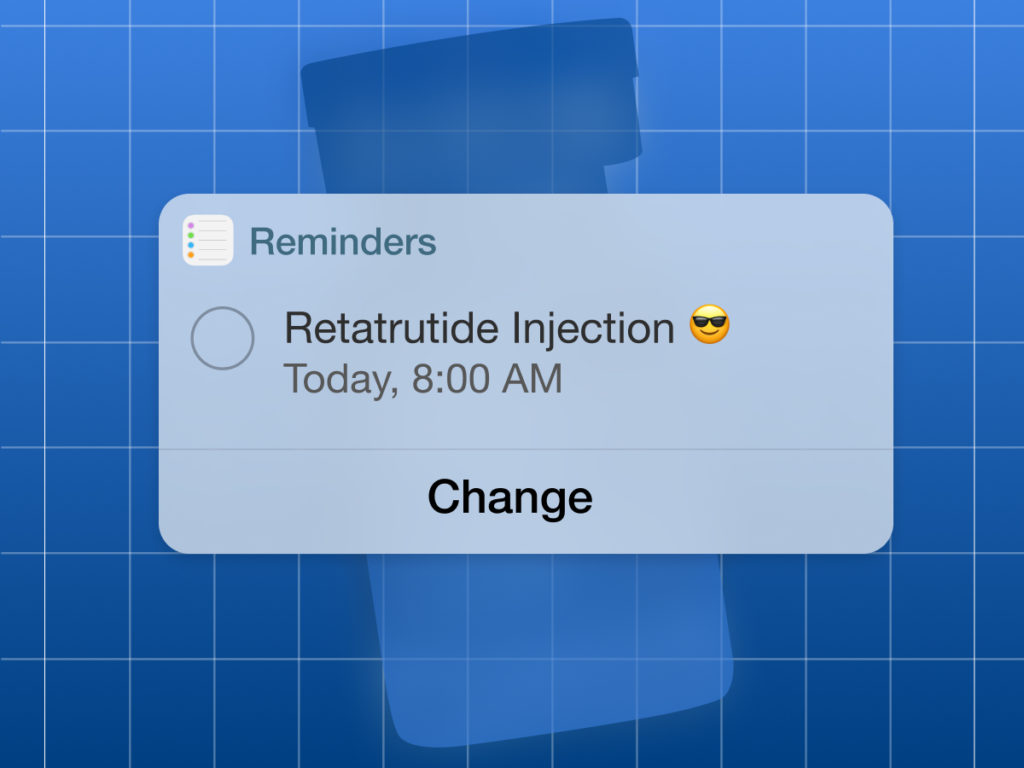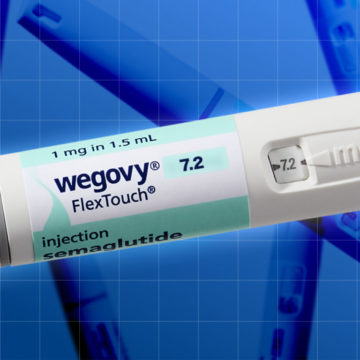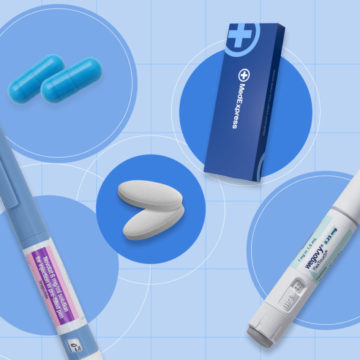You may have heard of a new injectable weight loss medication called retatrutide. While this treatment isn’t yet approved for use, here’s what we know about its dosing schedule so far and what it means for patients
Summary:
- Retatrutide is a once-weekly injectable “triple agonist” (GIP, GLP-1, and glucagon) from Eli Lilly, designed for weight loss and type 2 diabetes management.
- Clinical trials show promising results – an average of 24% body weight loss in 48 weeks, along with improved blood sugar, liver fat reduction and better heart health markers.
- Dosing is still under study, with Phase 2 trials testing 1-12 mg weekly. Side effects are mainly digestive, similar to other GLP-1 based drugs.
What is retatrutide?
Retatrutide is a once-weekly injectable weight loss medication currently being developed by Eli Lilly and Company (the same company that makes Mounjaro) for the treatment of type 2 diabetes and obesity. [1]
Retatrutide belongs to a class of medications called GIP–GLP-1–GCG receptor agonists, sometimes referred to as “triple G” or a triple agonist. This means that it mimics three separate hormones, GIP, GLP-1 and glucagon [2]. This triple-action approach is designed to offer more benefits than GLP-1 therapies (like semaglutide and liraglutide) or GIP/GLP-1 therapies (like tirzepatide).
Here’s how each hormone helps promote weight loss:
- GLP-1 (glucagon-like peptide-1) helps your body make more insulin when your blood sugar is high, slows down digestion so food stays in your stomach longer, and works on the brain to make you feel less hungry. [2]
- GIP (gastric inhibitory polypeptide) helps the body make more insulin after meals and may also have helpful effects on how the body handles fat. [2]
- Glucagon helps the body burn more energy by breaking down fat and making sugar in the liver, which can help the body use fat for energy. [2]
Benefits of retatrutide
While much of the reporting around retatrutide focuses on the remarkable weight loss results it has produced, studies also demonstrate that it impacts other factors like blood sugar, liver fat, cholesterol, and blood pressure.
Key benefits of retatrutide:
- Promoted significant weight loss, with participants losing 24% of their body weight on average in 48 weeks. [4]
- Improves blood sugar control and can help manage type 2 diabetes
- Reduces liver fat content, making it a promising treatment for fatty liver disease (MASLD/MASH). [4]
- Lowers blood pressure, improves cholesterol profiles, and reduces markers of cardiovascular risk. [4]
How to Administer Retatrutide
retatrutide is injected just under the skin every week, similarly to other GLP-1 medications like Wegovy and Mounjaro. Once it is approved for use, it will likely be sold in a pre-filled pen that you attach a needle to.
Retatrutide Dosing Schedule
With clinical trials still underway, there is currently no approved dose of retatrutide or any official dosage guides. Here’s what we know about the dosing schedule so far:
In Phase 2 clinical trials, patients were randomly assigned weekly doses of retatrutide as follows. [1]
- 1 mg
- 4 mg
- 4 mg with an initial dose of 2 mg
- 8 mg with an initial dose of 2 mg
- 8 mg with an initial dose of 4 mg
- 12 mg with an initial dose of 2 mg
In ongoing Phase 3 trials, researchers may adjust the dosing schedule to help reduce retatrutide’s side effects before it becomes available. [1]
Maintenance dose
With other GLP-1 medications like Mounjaro and Wegovy, your maintenance dose refers to the dose that provides the best results, while keeping side effects manageable. This may be the maximum recommended dose for your treatment, or a lower dose that achieves the best balance between effectiveness and minimal side effects. The retatrutide dosing schedule will likely work in the same way, but we’ll know more once Phase 3 trials are complete.
Side effects
Like other GLP-1s, the most commonly observed side effects in patients taking retatrutide were digestive, including nausea, diarrhoea, vomiting, and constipation. These side effects occurred more frequently at higher doses or when the strength of the dose was increased. [2]
We don’t have detailed information yet about serious side effects of retatrutide — this information will be released once it is approved.
Ready to Start Your Weight Loss Treatment?
At MedExpress, we’ll help determine which medication is best suited to your needs, based on your medical history and weight loss goals. Learn more about your options here.
References
- Drugscom. Retatrutide: What is it and is it FDA approved? [Internet]. Drugs.com. Drugs.com; 2024. Available from: https://www.drugs.com/history/retatrutide.html
- Jastreboff AM, Kaplan LM, Frias JP, Wu Q, Du Y, Sirel Gurbuz, et al. Triple–Hormone-Receptor Agonist Retatrutide for Obesity — A Phase 2 Trial. The New England Journal Of Medicine [Internet]. 2023 Jun 26;389(6). Available from: https://www.nejm.org/doi/full/10.1056/NEJMoa2301972
Next review date: 13/10/2028



